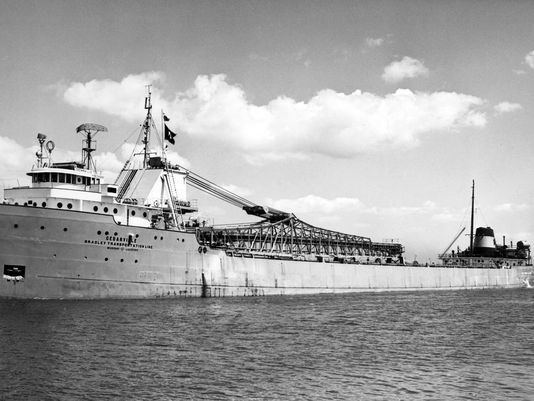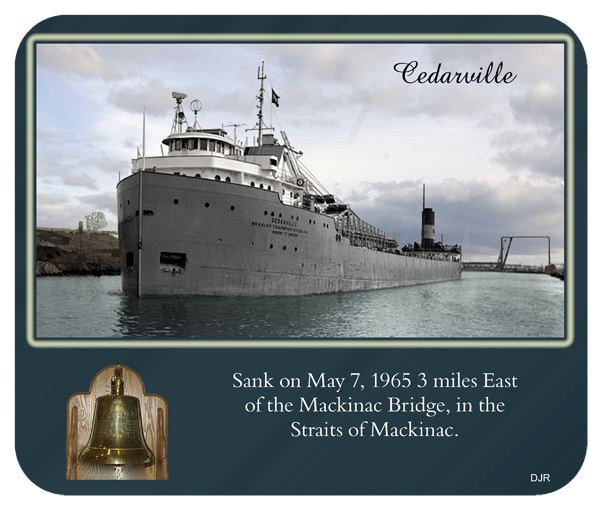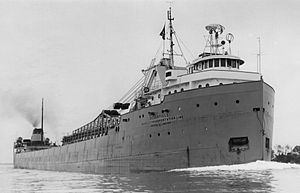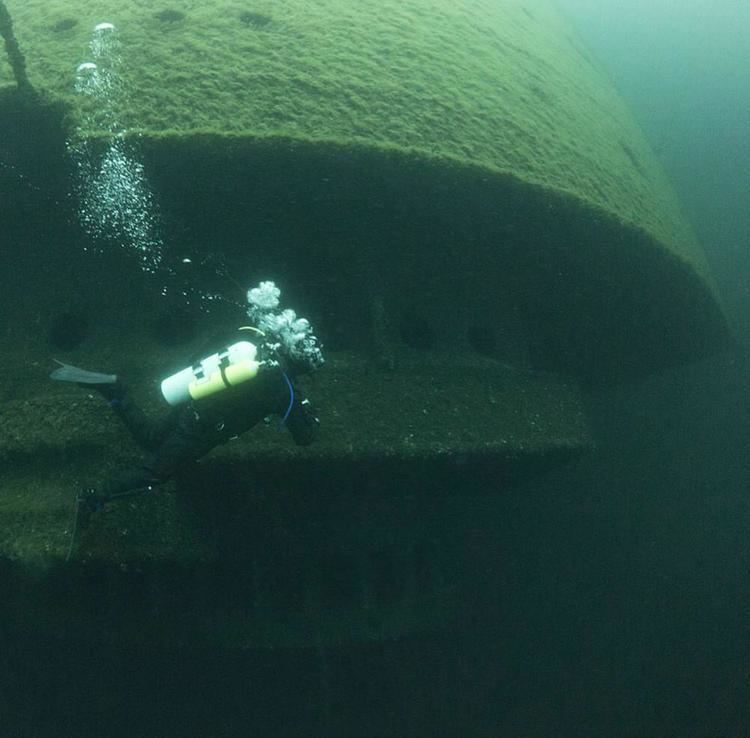Name SS Cedarville In service 1927 Tonnage 8,575 gross tons | Owner US Steel Out of service 1965 Length 179 m | |
Builder Great Lakes Engineering Works | ||
Ss cedarville positivelymichigan net
SS Cedarville was a bulk carrier that carried limestone on the Great Lakes in the mid-20th century until it sank after a collision with another ship, SS Topdalsfjord.
Contents

Service history

Cedarville was built in 1927 by the Great Lakes Engineering Works in River Rouge, Michigan. The ship was launched as the SS A.F. Harvey, and entered service for the Pittsburgh Steamship Company division of US Steel. In 1956, the ship was transferred to the Bradley Transportation Company, still owned by US Steel. As part of the transfer, the ship was converted to be a self-unloading vessel and was renamed Cedarville.
Sinking

On 7 May 1965, Cedarville was travelling between Rogers City, Michigan and Gary, Indiana with a load of 14,411 tons of limestone. A mile east of the Mackinac Bridge, in heavy fog, Cedarville collided with the Norwegian ship SS Topdalsfjord. The collision occurred as a result of miscommunication between the two ships, which both changed their course a mile away from each other, with Topdalsfjord's captain steering his ship on a course that would lead to the two vessels passing each other on their starboard sides. The captain of Cedarville, however, intended for his vessel to cross the bow of Topdalsfjord, but his message stating such was not received by Topdalsfjord, which continued on a course that led to it colliding with Cedarville's port side.

While the collision caused only superficial damage above the waterline, consisting mainly of broken railings and deck plates, the bow of Topdalsfjord had created a large hole in Cedarville's hull below the waterline, and within minutes of the collision a slight list to the port had developed. The captain of Cedarville ordered water to be pumped into the starboard ballast tanks to counteract the list, and intended to try to run the ship aground to prevent it from sinking. As the ship moved towards land, however, the weight of the water within the hull forced the bow down, and the ship began listing to starboard, eventually rolling over before sinking. Most survivors of the collision, in which ten out of the 35 aboard died, were picked up by the German freighter MV Weissenburg, and subsequently transferred to the US Coast Guard cutter Mackinaw.
Inquiry into sinking

A U.S. Coast Guard inquiry into the incident found that the captain of Cedarville was at fault for the sinking; he subsequently was charged with four counts of faulty seamanship. He initially pleaded innocent, but in August 1965 changed his plea to guilty. His license was suspended for a year as a result of the inquiry.
Wreck site

The wreck of Cedarville lies in the Straits of Mackinac Shipwreck Preserve in water is around 110 feet (34 m) deep, although the highest point of the hull is around 35 feet (11 m) below the surface and the cabins of the ship are around 75 feet (23 m) underwater. Expert divers are able to enter the ship, as most parts remain fairly undamaged. The Cedarville is the third largest ship lost on the Great Lakes after the Edmund Fitzgerald and sister ship Carl Bradley.
